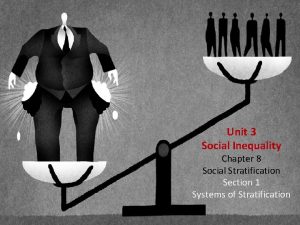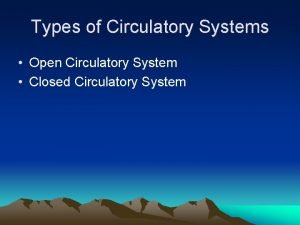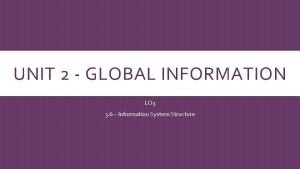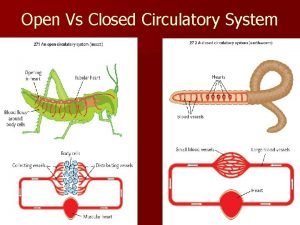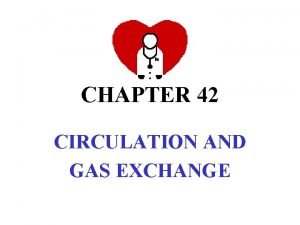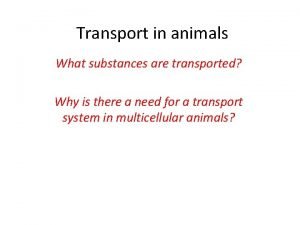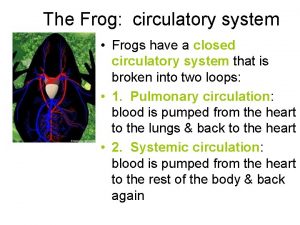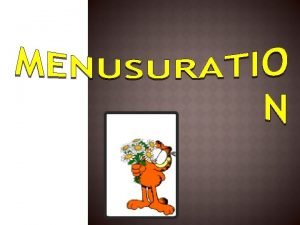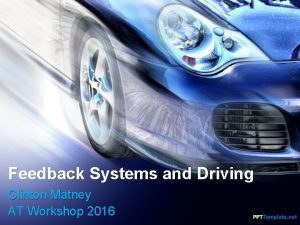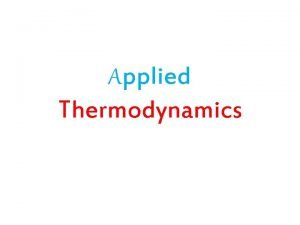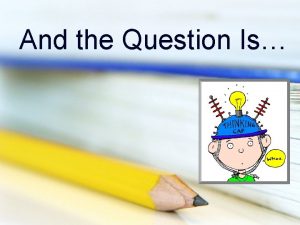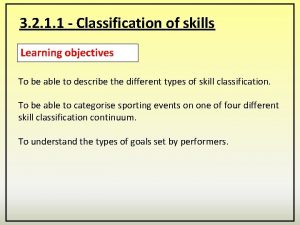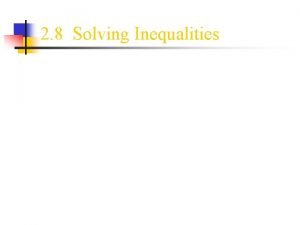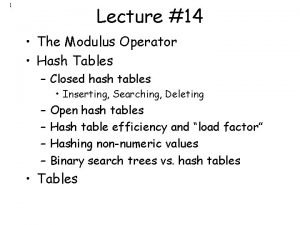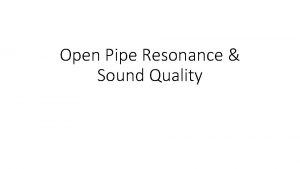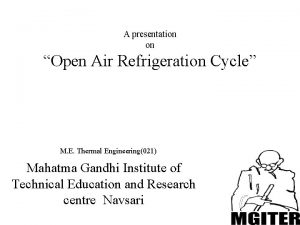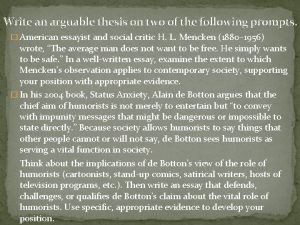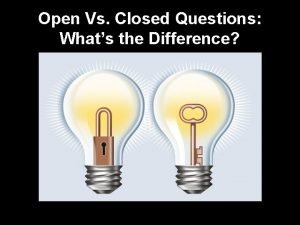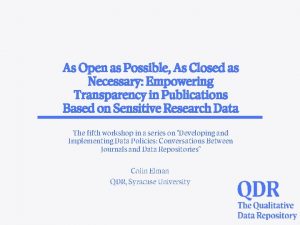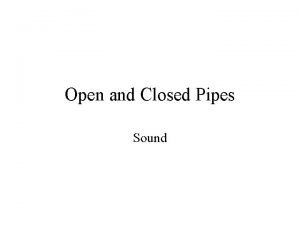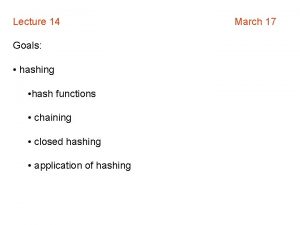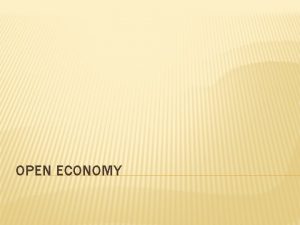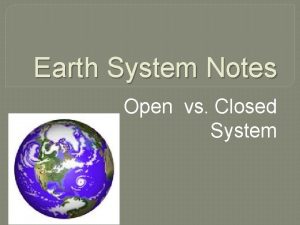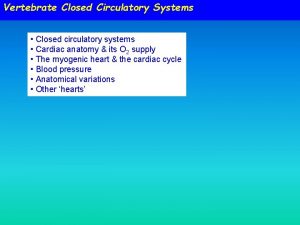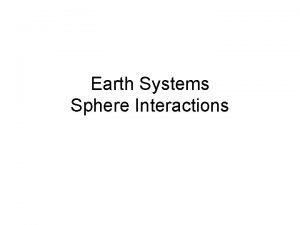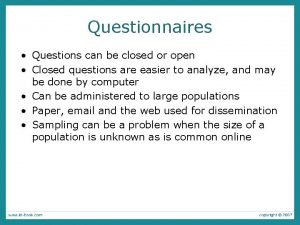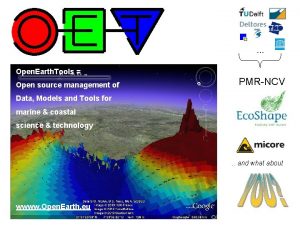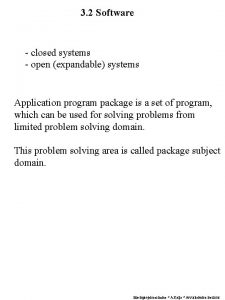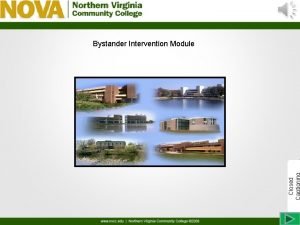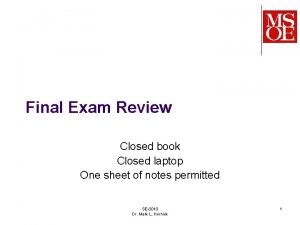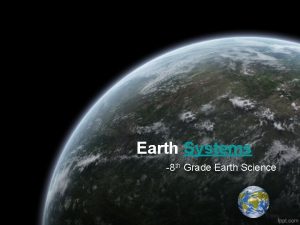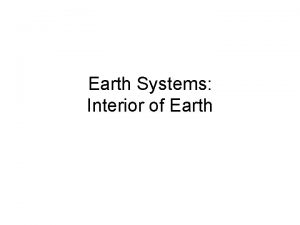Earth as a system Open Closed Systems system


































- Slides: 34

Earth as a system

Open & Closed Systems system – defined as a set of parts that work together. open system – parts can be added or lost closed system – all parts exist in precise amounts and nothing can be added or lost

Open System Examples Hockey Teams The Human Body

Closed system example A closed jar

Earth – Closed & Open Closed- all important things such as water, gases, and nutrients exist in limited amounts. They get recycled over and over again. If we use up or deplete these ingredients, we risk upsetting the balance of the entire system. Open – Heat, radiation, spaceships, debris from space. (incoming and outgoing energy) (shortwave and longwave)

4 Spheres 1. Atmosphere – all gases If earth was the size of a beach ball, the atmosphere would be as thin as a piece of paper.

Atmosphere Processes Earth’s rotation on its axis and its orbital revolution around the sun Unequal heating of Earth’s land forms and oceans Constant movement of air and water through atmosphere and oceans Drives Earth’s Weather and Climate

Single-cell model Assumptions: - earth’s surface is uniformly covered in water - The sun is always directly over the equator (winds will not shift seasonally) - The earth does not rotate (only have to deal with pressure force)

Single-cell model Response to the unequal heating of the earth

Coriolis Effect

Three-cell model Allow earth to spin.

Prevailing winds – Global Patterns - (January) Add tilt – seasons have an effect! Example: India (cold dry air gets pushed down from the Himalayan mountains) – Result drought

Prevailing winds – Global Patterns - (July) Example: Wind patterns reversed – now blow warm moist air from Indian ocean Result: torrential rains and flooding (monsoon season)

4 Spheres 2. Biosphere – all living things (Vladmir Vernadsky) - Russian - Divided up into separate but interdependent units called ecosystems. - The continuation of life within the biosphere depends on the constant recycling of a number of chemical ingredients called nutrients.

Nutrient Cycles 1) Oxygen Cycle 2) Nitrogen Cycle 3) Carbon Cycle 4) Water Cycle

The Carbon Cycle Atmosphere Plants, Animals, and Soil Atmosphere ** A very important cycle, even if more than 99 percent of the Earth’s carbon supply is stored in sedimentary rock and in the oceans.


Carbon Cycle Photosynthesis! Deforestation! - Release of carbon dioxide - http: //www. youtube. com/watch? v =7 Np. TBQFw. C 8 U http: //www. youtube. com/watch? v =unv 92 g. Q 4 ZAo -

Oxygen Cycle Majority of oxygen in the atmosphere is produced by the respiration of plants. (90% by algae in the world’s oceans) Plants release this oxygen when they produce carbohydrates during photosynthesis. Reacts with carbon released by decomposing or burning vegetation or fossil fuels to form CO 2 Breathed in by humans & animals and out as CO 2 Taken back by plant roots – reverses process of photosynthesis

Nitrogen Cycle Most plentiful element in Earth’s atmosphere (78%) Nitrogen – (“Free State”) “Fix” free nitrogen Ammonia & Nitrates Microscopic bacteria living on the roots of certain plants called legumes (alfalfa, peas, and beans) Plant converts Proteins Animals eat plants and use these proteins and other nitrogen compounds to build amino acids New Proteins – Amino Acids

Nitrogen Cycle New Proteins – Amino Acids Animals produce waste and die – bacteria begins decomposing amino acid proteins Ammonia & Nitrates Reabsorbed by plant roots, carried by water to the oceans, or fixed again by bacteria in a reverse process Release Nitrogen back into atmosphere in its “free state” Denitrification


Deforestation and water cycle… How is the water cycle affected when a forest is cut down?

4 Spheres 3. Lithosphere – soils, rocks, minerals (Earth’s crust)

Rock Cycle http: //www. youtube. com/watch? v=r 68 i. Ew. Ydbh 4

Rock Cycle (Pg. 55 -56) Igneous – granite Sedimentary – sandstone and shale Metamorphic – marble or slate


- Plates – segments of Earth’s crust which are being pushed apart or together in precise directions and constant speeds.

4 Spheres 4. Hydrosphere– all water

Ocean currents Are similar to the wind patterns Drag of wind on the surface of oceans – primary cause of currents. Also affected by Coriolis effect Help to restore energy balance (moving warm water north and cooler water south) Influence the climate of surrounding areas Gulf stream

Ocean currents

Tides Cause – gravitational pull of the moon and sun Ocean water “piles up” on the side of Earth facing the moon and on the far side of Earth directly opposite the moon. (far side is a result of the centrifugal force of Earth’s rotation) This is high tide. Perpendicular to the high tides are the low tides.

Importance of Tides Move large amounts of sediment Marshes that become important feeding areas for many types of fish , shellfish , and waterfowl Hydroelectric power Bring Nutrients into coastal areas Help sustain plant life, provide food for shrimp & crabs Navigation and shipping Tidal surges could keep harbours clear of ice buildups

Gaia Hypothesis British biochemist James Lovelock He believed Earth can be viewed as as single organism that in 4. 6 billion years has developed into a selfregulating system. Ex: an overgrown forest cannot support new life. Wildfires burn it down, creating room for new growth Gaia (goddess of the Earth) can adapt Asteroid collisions Earth cannot be destroyed by humans Only concern: how Gaia reacts to the environmental assault
 Open closed isolated system
Open closed isolated system Open and closed stratification systems
Open and closed stratification systems Does a clam have an open or closed circulatory system
Does a clam have an open or closed circulatory system Open and closed system in thermodynamics
Open and closed system in thermodynamics Normally open, timed-closed contact symbol
Normally open, timed-closed contact symbol Open innovation open science open to the world
Open innovation open science open to the world Single vs double circulatory system
Single vs double circulatory system Difference between open and closed circulatory system
Difference between open and closed circulatory system Open circulatory system vs closed
Open circulatory system vs closed Frog closed circulatory system
Frog closed circulatory system Disadvantages of mhd generator
Disadvantages of mhd generator Closed vs open thesis
Closed vs open thesis Clipper closed vs open
Clipper closed vs open Nudging probe questions
Nudging probe questions What is a modified block style letter
What is a modified block style letter Closed and open figures
Closed and open figures Open loop vs closed loop in cars
Open loop vs closed loop in cars Open vs closed switch
Open vs closed switch Open impeller vs closed impeller
Open impeller vs closed impeller Difference between open cycle and closed cycle gas turbine
Difference between open cycle and closed cycle gas turbine Closed and open questions
Closed and open questions Open vs closed adoption
Open vs closed adoption Open and closed skills examples
Open and closed skills examples Is less than open or closed circle
Is less than open or closed circle Externally paced skill example
Externally paced skill example Linear probing hash table
Linear probing hash table Is less than open or closed circle
Is less than open or closed circle What is a closed pipe resonator
What is a closed pipe resonator Open and closed air refrigeration cycle
Open and closed air refrigeration cycle Closed thesis example
Closed thesis example Difference between open and closed questions
Difference between open and closed questions Open vs closed medulla
Open vs closed medulla As open as possible as closed as necessary
As open as possible as closed as necessary Instruments
Instruments Closed hashing
Closed hashing

